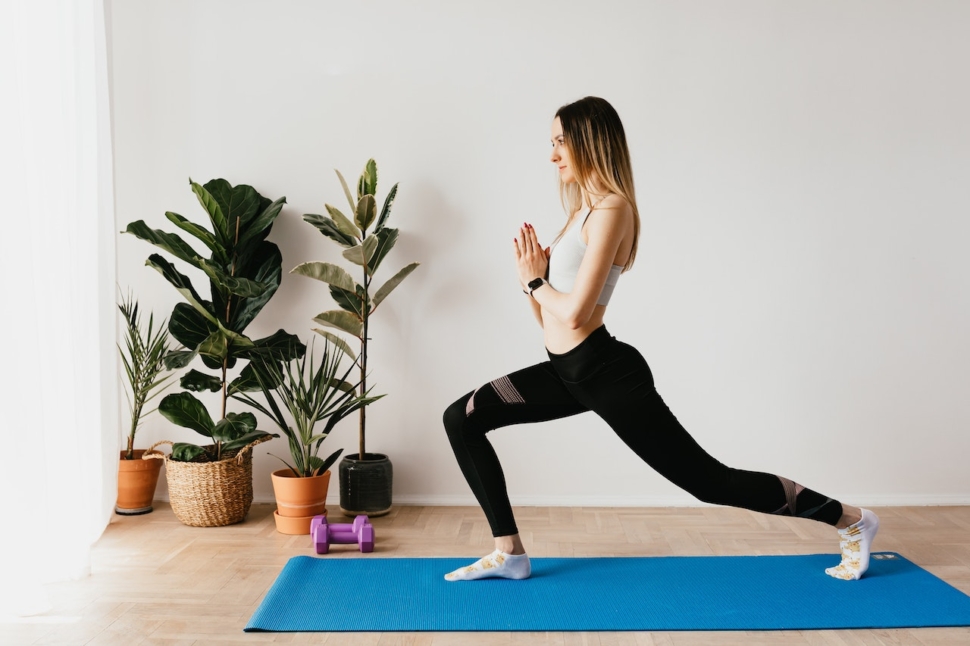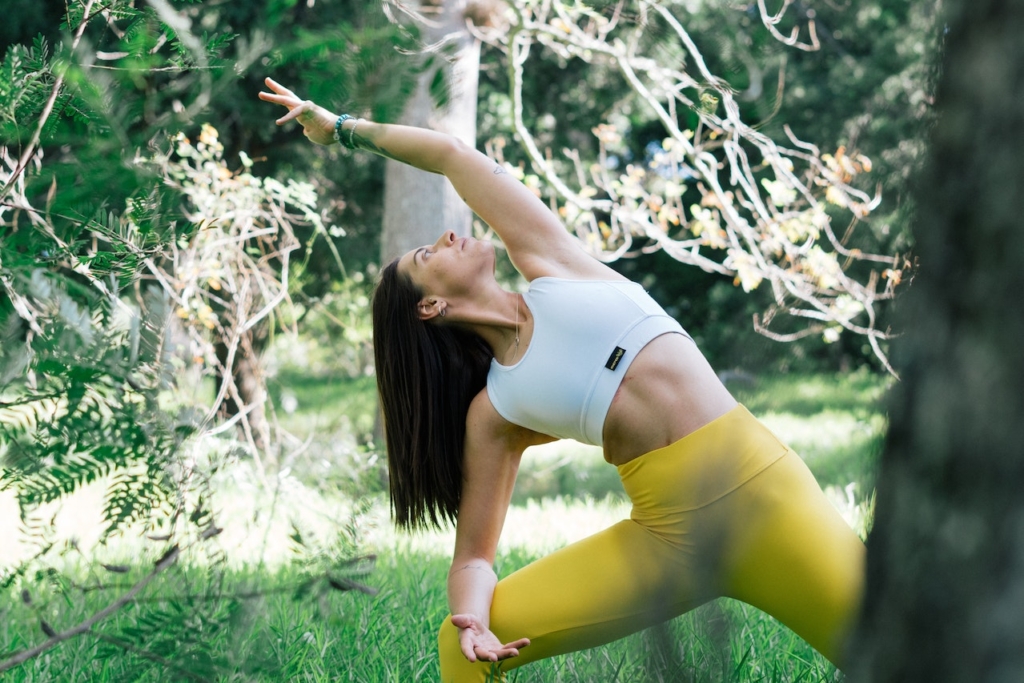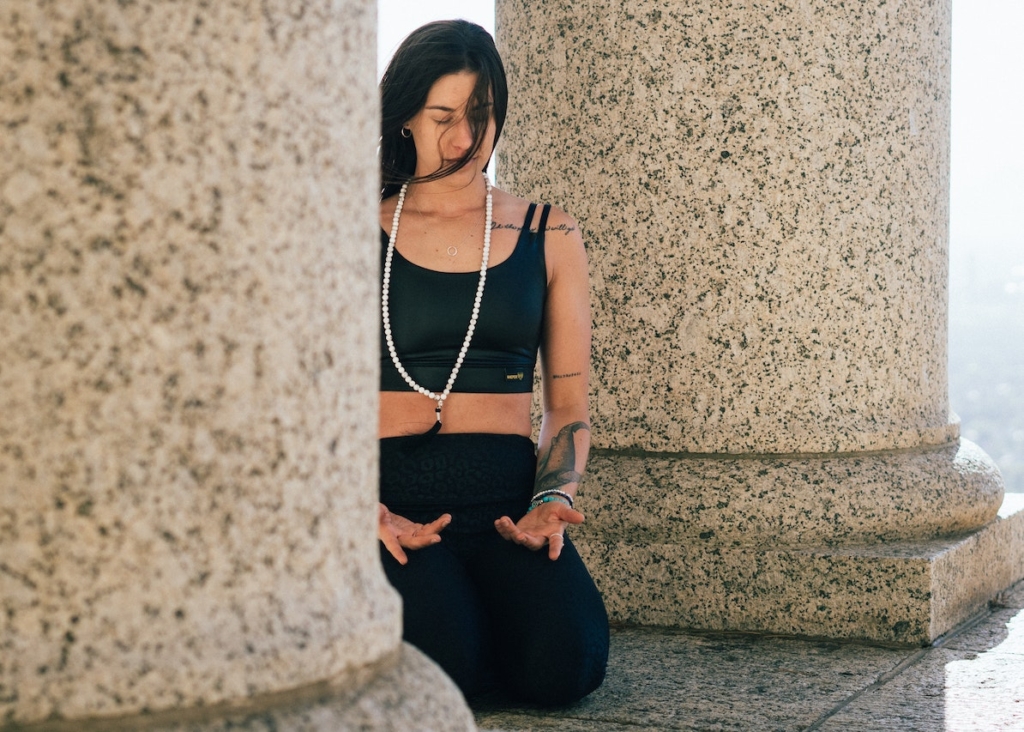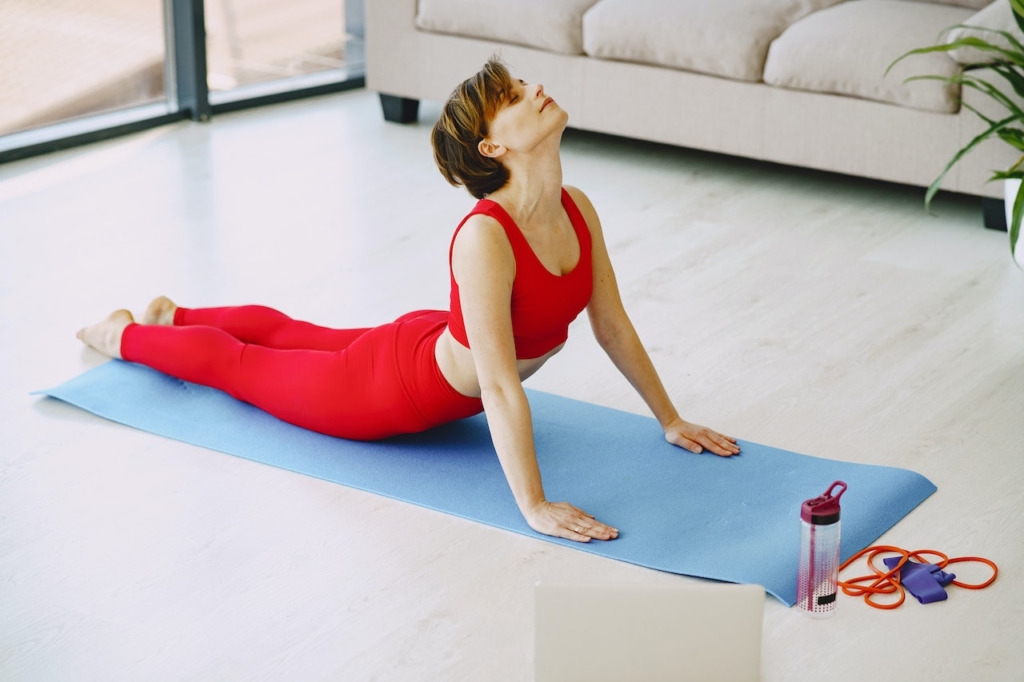Prayer Stretch is a form of stretching that combines physical exercise with spiritual practice. It is a unique way to connect the mind, body, and spirit through movement. Prayer Stretch is often used as a form of meditation and relaxation, and can be beneficial for people of all ages and fitness levels.
Understanding Prayer Stretch
Prayer Stretch is a form of stretching that involves a combination of physical movements and prayer. It is a way to connect the mind, body, and spirit through movement and meditation. Prayer Stretch is often used as a form of relaxation and stress relief, and can be practiced by people of all ages and fitness levels.
Benefits of Prayer Stretch
Prayer Stretch has many benefits for the mind, body, and spirit. It can help to reduce stress and anxiety, improve flexibility and range of motion, increase strength and endurance, and promote overall health and well-being. Prayer Stretch can also be used as a form of meditation, helping to calm the mind and promote spiritual awareness.
Key Takeaways
- Prayer Stretch is a unique form of stretching that combines physical exercise with spiritual practice.
- Prayer Stretch can be beneficial for people of all ages and fitness levels, and is often used as a form of relaxation and stress relief.
- Prayer Stretch has many benefits for the mind, body, and spirit, including reducing stress and anxiety, improving flexibility and range of motion, and promoting overall health and well-being.
Understanding Prayer Stretch
Definition
Prayer stretch is a type of stretching that involves a combination of stretching and prayer. It is a form of exercise that is believed to help improve flexibility, reduce stress, and promote relaxation. Prayer stretch involves stretching the body while praying or meditating, which can help to calm the mind and reduce tension in the body.
Form
The form of prayer stretch can vary depending on the individual and their beliefs. Some people may choose to incorporate specific prayers or mantras into their stretching routine, while others may simply focus on their breath and relaxation. The main goal of prayer stretch is to combine physical movement with mental focus, which can help to improve overall well-being.
When performing prayer stretch, it is important to focus on proper form to avoid injury. This includes warming up before stretching, stretching slowly and gently, and avoiding over-stretching. It is also important to listen to your body and avoid pushing yourself too hard.
Overall, prayer stretch can be a beneficial addition to any exercise routine. It can help to improve flexibility, reduce stress, and promote relaxation. By combining physical movement with mental focus, prayer stretch can help to improve overall well-being.
Benefits of Prayer Stretch
Prayer stretch is a simple exercise that involves kneeling down and stretching the arms forward while keeping the back straight. This exercise has been gaining popularity in recent years due to its numerous benefits. In this section, we will discuss the benefits of prayer stretch and how it can improve your overall health and well-being.
Relaxation and Tension Release
One of the primary benefits of prayer stretch is relaxation and tension release. This exercise helps to relieve stress and tension in the body, especially in the neck, shoulders, and back. It also helps to calm the mind and reduce anxiety. By practicing prayer stretch regularly, you can improve your overall sense of well-being and feel more relaxed and at ease.
Improving Flexibility
Prayer stretch is an excellent exercise for improving flexibility. It stretches the muscles in the back, shoulders, and arms, which can help to increase range of motion and improve overall flexibility. This exercise is particularly beneficial for those who spend a lot of time sitting or working at a desk, as it can help to counteract the negative effects of a sedentary lifestyle.
Promoting Better Posture
Prayer stretch is also beneficial for promoting better posture. By stretching the muscles in the back and shoulders, this exercise helps to improve alignment and reduce the risk of developing poor posture. It can also help to alleviate back pain and prevent future injuries.
Pain Relief
Prayer stretch can be an effective way to reduce pain, particularly in the back. By stretching the muscles in the back and shoulders, this exercise can help to alleviate tension and reduce pain. It is also a low-impact exercise that can be performed by people of all ages and fitness levels, making it an excellent option for those who suffer from chronic pain or injuries.
In conclusion, prayer stretch is a simple yet effective exercise that offers numerous benefits. It can help to promote relaxation, improve flexibility, promote better posture, and reduce pain. By incorporating prayer stretch into your daily routine, you can improve your overall health and well-being.
Muscles Involved in Prayer Stretch
Primary Muscles
The prayer stretch is an effective stretch that targets several muscles in the upper body and back. The primary muscles involved in this stretch are the chest, shoulders, and arms.
- Chest: The pectoralis major and minor muscles are the primary muscles of the chest that are stretched during the prayer stretch. These muscles are responsible for moving the arms across the body and are often tight due to poor posture and excessive sitting.
- Shoulders: The shoulder muscles, including the deltoids, rotator cuff muscles, and trapezius muscles, are also targeted during the prayer stretch. These muscles are responsible for stabilizing and moving the shoulder joint and can become tight due to poor posture and repetitive overhead movements.
- Arms: The biceps and triceps muscles of the arms are also involved in the prayer stretch. These muscles are responsible for flexing and extending the elbow joint and can become tight due to excessive computer work and other repetitive tasks.
Secondary Muscles
In addition to the primary muscles, the prayer stretch also targets several secondary muscles in the back and lower body.
- Back: The latissimus dorsi (lats) and other muscles of the upper and mid back are stretched during the prayer stretch. These muscles are responsible for pulling the arms down and back and can become tight due to poor posture and excessive sitting.
- Lower Back: The lumbar range of motion is also improved during the prayer stretch, which can help to relieve tension and tightness in the lower back muscles.
Overall, the prayer stretch is an effective way to stretch and strengthen the muscles of the upper body and back. By incorporating this stretch into your daily routine, you can improve your posture, reduce tension and tightness, and prevent injury.
Executing the Prayer Stretch
The prayer stretch is a simple exercise that can be done in either a standing or kneeling position. It is a great way to stretch out the hips and improve flexibility in the lower body. In this section, we will discuss how to execute the prayer stretch in both positions.
Standing Position
To execute the prayer stretch in a standing position, follow these steps:
- Stand with your feet hip-width apart.
- Bring your hands together in front of your chest, as if you were praying.
- Slowly lower your hands towards the floor, keeping your palms together.
- As you lower your hands, bend forward at the hips, keeping your back straight.
- Stop when you feel a stretch in your hips and hold the position for 10-15 seconds.
- Slowly return to the starting position.
Kneeling Position
To execute the prayer stretch in a kneeling position, follow these steps:
- Start in a kneeling position with your knees hip-width apart and your hands on your thighs.
- Bring your hands together in front of your chest, as if you were praying.
- Slowly lower your hands towards the floor, keeping your palms together.
- As you lower your hands, lean forward, keeping your back straight.
- Stop when you feel a stretch in your hips and hold the position for 10-15 seconds.
- Slowly return to the starting position.
It is important to remember to breathe deeply and evenly throughout the exercise. If you feel any pain or discomfort, stop immediately. The prayer stretch can be repeated several times throughout the day to improve flexibility and reduce tension in the hips.
Variations of Prayer Stretch
Prayer Stretch is a popular yoga pose that is often used to stretch the back, shoulders, and arms. There are many variations of this pose that can be performed with or without equipment. Here are some of the most common variations of Prayer Stretch:
With Equipment
Using equipment can help you to deepen your stretch and make the pose more challenging. Here are some variations of Prayer Stretch that can be performed with equipment:
Yoga Block
- Place a yoga block on the floor in front of you.
- Start in a kneeling position with your hands on the block.
- Slowly walk your hands forward until your forehead touches the block.
- Hold the pose for 30 seconds to 1 minute.
Resistance Band
- Hold a resistance band with both hands.
- Bring your arms overhead and stretch the band.
- Slowly lower your arms behind your back.
- Hold the pose for 30 seconds to 1 minute.
Without Equipment
Prayer Stretch can also be performed without equipment. Here are some variations of the pose that can be done without any equipment:
Kneeling Prayer Stretch
- Start in a kneeling position.
- Bring your hands together in front of your chest.
- Slowly lower your hands to the floor in front of you.
- Hold the pose for 30 seconds to 1 minute.
Standing Prayer Stretch
- Stand with your feet hip-width apart.
- Bring your hands together in front of your chest.
- Slowly raise your hands overhead.
- Hold the pose for 30 seconds to 1 minute.
Prayer Stretch is a versatile pose that can be modified to suit your needs. Whether you are a beginner or an experienced yogi, there is a variation of this pose that will work for you.
Tips and Precautions for Prayer Stretch
Avoiding Injuries
When practicing prayer stretch, it’s important to be mindful of your body and avoid any movements that cause discomfort or pain. Here are some tips to help you avoid injuries:
- Start slowly: If you’re new to prayer stretch, start with gentle movements and gradually increase the intensity as your body becomes more flexible.
- Listen to your body: If you feel any discomfort or pain, stop the stretch immediately and adjust your form or intensity.
- Don’t force it: Avoid pushing your body beyond its limits. Instead, focus on gentle, controlled movements.
- Warm up first: Before practicing prayer stretch, warm up your body with some light cardio or stretching exercises.
Correcting Form
Proper form is essential when practicing prayer stretch to avoid injuries and get the most benefit from the stretch. Here are some tips to help you correct your form:
- Keep your wrists straight: Avoid bending your wrists during the stretch, as this can cause discomfort or pain.
- Engage your core: To avoid putting too much pressure on your wrists and forearms, engage your core muscles to support your body.
- Relax your fingers: Avoid gripping your hands too tightly during the stretch, as this can cause discomfort or pain in your fingers.
- Keep your shoulders relaxed: Avoid tensing your shoulders during the stretch, as this can cause discomfort or pain in your neck and upper back.
By following these tips and precautions, you can safely and effectively practice prayer stretch to improve your flexibility and reduce stress.
Prayer Stretch Routine
The Prayer Stretch is a simple yet effective stretching exercise that targets the upper back, shoulders, and arms. This exercise is perfect for those who spend long hours sitting at a desk or driving, as it helps to relieve tension and improve posture. Here is a routine that includes a few variations of the Prayer Stretch.
At Home
To perform the Prayer Stretch at home, follow these instructions:
- Start by standing with your feet hip-width apart and your arms at your sides.
- Raise your arms straight up above your head, with your palms facing each other.
- Slowly bend your elbows, bringing your hands together in front of your chest, as if in prayer.
- Keeping your hands together, lower them down towards your waist, while keeping your elbows bent.
- Hold this position for 10-15 seconds, then slowly raise your arms back up to the starting position.
Repeat this stretch 5-10 times, or as many times as you feel comfortable.
At the Gym
If you prefer to do the Prayer Stretch at the gym, you can use a stability ball to add an extra challenge. Here’s how:
- Sit on a stability ball with your feet flat on the ground and your back straight.
- Hold a dumbbell in each hand, with your arms extended straight up above your head.
- Slowly bend your elbows, bringing your hands together in front of your chest, as if in prayer.
- Keeping your hands together, lower them down towards your waist, while keeping your elbows bent.
- Hold this position for 10-15 seconds, then slowly raise your arms back up to the starting position.
Repeat this stretch 5-10 times, or as many times as you feel comfortable.
Adding the Prayer Stretch to your workout routine can help improve your flexibility, posture, and overall well-being. Try incorporating it into your daily routine to experience the benefits for yourself.
Integrating Prayer Stretch into Everyday Tasks
Prayer stretch is a simple and effective way to improve flexibility and reduce stress. It involves a series of stretches that are performed in a kneeling position, with the hands clasped together in front of the chest. While prayer stretch is often used as a warm-up or cool-down exercise for yoga or other physical activities, it can also be integrated into everyday tasks to help improve posture, reduce tension, and increase flexibility.
One of the easiest ways to integrate prayer stretch into everyday tasks is to do it while sitting. Whether you are at a desk, on the couch, or in a car, taking a few moments to perform prayer stretch can help reduce tension in the neck, shoulders, and back. To do this, simply sit up straight with your feet flat on the ground, and place your hands in prayer position in front of your chest. Take a deep breath in, and as you exhale, gently press your hands together while lowering your head towards your hands. Hold this position for a few seconds, and then release.
Another way to integrate prayer stretch into everyday tasks is to do it while standing. This can be especially helpful for those who spend a lot of time on their feet, such as retail workers or healthcare professionals. To do this, stand with your feet hip-width apart and your hands in prayer position in front of your chest. Take a deep breath in, and as you exhale, gently press your hands together while raising your arms above your head. Hold this position for a few seconds, and then release.
Incorporating prayer stretch into your daily routine can help improve your overall health and well-being. By taking just a few moments each day to stretch and breathe deeply, you can reduce stress, improve flexibility, and increase your overall sense of calm and relaxation. So why not give it a try?
Conclusion
In conclusion, prayer stretch is a simple and effective exercise that can help individuals improve their flexibility, posture, and overall physical health. By incorporating prayer stretch into their daily routine, individuals can experience a wide range of benefits, including reduced stress and tension, improved circulation, and increased range of motion.
Prayer stretch is easy to perform and can be modified to suit the needs of individuals of all fitness levels. Whether performed as a standalone exercise or as part of a larger stretching routine, prayer stretch is an excellent way to improve flexibility and promote overall physical wellness.
While prayer stretch is a safe and effective exercise, it is important to remember that proper form and technique are essential to prevent injury and ensure maximum benefit. Individuals should consult with a qualified fitness professional before beginning any new exercise program, and should always listen to their bodies and adjust their routine as needed.
Overall, prayer stretch is a valuable addition to any fitness routine, and can help individuals achieve their health and wellness goals in a safe and effective manner. By incorporating prayer stretch into their daily routine, individuals can experience improved physical health, reduced stress and tension, and increased overall wellbeing.
Frequently Asked Questions
What are the benefits of the Standing Prayer Stretch?
The Standing Prayer Stretch is an effective exercise that can help improve posture, flexibility, and range of motion in the shoulders, chest, and upper back. It can also help alleviate tension and stress in the upper body.
How do you perform the Arm Prayer Stretch?
To perform the Arm Prayer Stretch, stand with your feet shoulder-width apart and your arms extended in front of you. Bring your palms together in front of your chest and then slowly raise your arms overhead. Hold the stretch for a few seconds and then slowly lower your arms back down to the starting position.
What muscles are targeted by the Seated Prayer Stretch?
The Seated Prayer Stretch targets the muscles in the upper back, shoulders, and chest. It can help improve posture and alleviate tension and pain in these areas.
What is the Reverse Prayer Stretch and how do you do it?
The Reverse Prayer Stretch is a variation of the Prayer Stretch that targets the muscles in the wrists, forearms, and hands. To perform this stretch, bring your palms together behind your back with your fingers pointing downwards. Slowly raise your hands towards your head, keeping your palms together, and hold the stretch for a few seconds before releasing.
Can the Prayer Stretch help with carpal tunnel syndrome?
While the Prayer Stretch can help improve flexibility and range of motion in the wrists and hands, it may not be effective in treating carpal tunnel syndrome. It is recommended to consult a medical professional for proper diagnosis and treatment.
What are some other effective back mobility exercises besides the Prayer Stretch?
Other effective back mobility exercises include the Cat-Cow Stretch, the Child’s Pose, and the Cobra Pose. These stretches can help improve flexibility, alleviate tension, and reduce pain in the back and neck.




